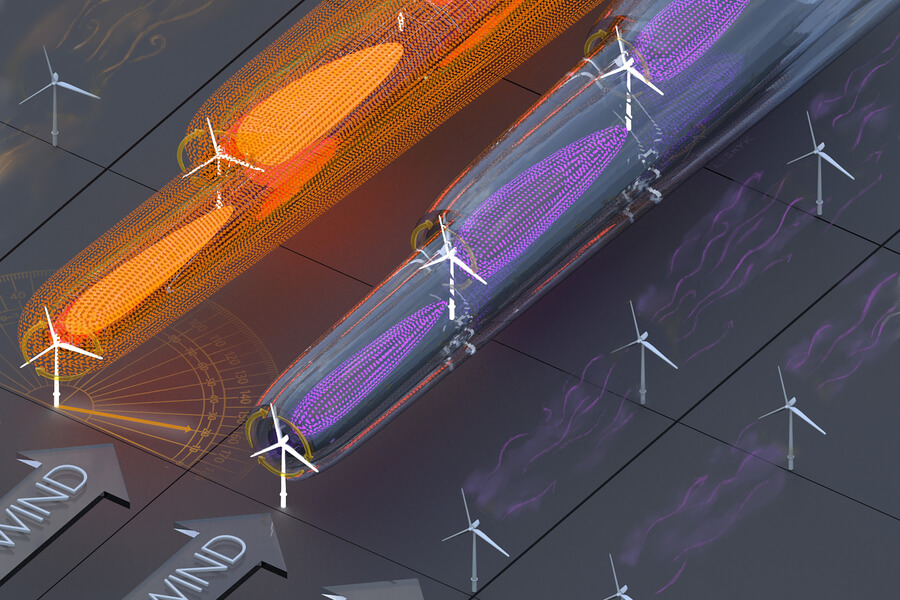Free translation by: Franyi Sarmiento, Ph.D., Inspenet, August 17, 2022
Engineers at MIT have discovered that energy production at wind farm facilities can be increased by modeling the flow of the entire collection of turbines and optimizing the control of individual turbines.
The increase in energy production from a given installation may seem modest: it is about 1.2 percent overall and 3 percent for optimal wind speeds. But the algorithm can be implemented in any wind farm, and the number of wind farms is growing rapidly to meet accelerated climate targets.
If that 1.2 percent energy increase were applied to all existing wind farms worldwide, it would be the equivalent of adding more than 3,600 new wind turbines, or enough to power about 3 million homes, and a total gain for energy producers of nearly a billion. dollars per year, researchers say. And all this at essentially no cost.
The research was published in the journal Nature Energy, in a study led by MIT Esther and Harold E. Edgerton, Michael F. Howland assistant professor of civil and environmental engineering.
“Essentially, all existing utility-scale turbines are ‘greedily’ and independently controlled,” Howland says. The term “greedily,” he explains, refers to the fact that they are controlled to maximize only their own power output, as if they were isolated units with no detrimental impact on neighboring turbines.

Image: Victor Leshyk
But in the real world, turbines are deliberately spaced in wind farms to achieve economic benefits related to land use (onshore or offshore) and infrastructure, such as access roads and transmission lines. This proximity means that turbines are often strongly affected by turbulent wakes produced by others upwind of them, a factor that individual turbine control systems currently do not take into account.
“From a flow physics point of view, putting wind turbines together in wind farms is usually the worst thing you can do,” Howland says. “The ideal approach to maximizing total energy production would be to put them as far apart as possible,” but that would increase the associated costs.
Howland and his collaborators developed a new flow model that predicts the power output of each turbine in the farm as a function of the incident winds in the atmosphere and the control strategy of each turbine. While based on the physics of flow, the model learns from wind farm operational data to reduce predictive error and uncertainty.
Without changing the physical locations of the turbines and existing wind farm hardware systems, they have used data-assisted modeling based on the physics of the flow within the wind farm and the resulting power output of each turbine, given different wind conditions, to find the optimal orientation for each turbine at any given time. This allows them to maximize the output of the entire farm, not just individual turbines.
This material from news.mit.edu was edited for clarity, style and length.
Source: https://news.mit.edu/2022/wind-farm-optimization-energy-flow-0811

